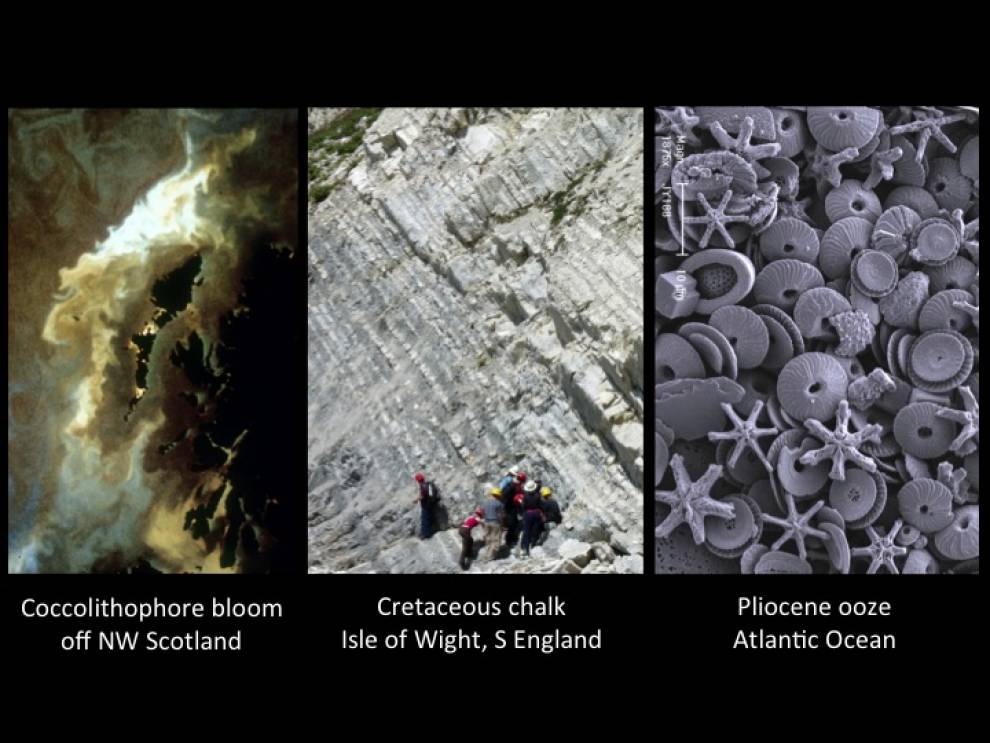
Nannoplankton bloom, chalk and ooze
Nannoplankton cells convert the Sun's energy into food through the process of photosynthesis, and so live in the uppermost 200 metres of the ocean where sunlight is plentiful (the photic zone). Like all life, they also need nutrients, such as phosphorous, nitrogen and iron, and different species are adapted to varying amounts of these nutrients, plus other environmental factors such as light intensity and temperature. If we can determine the environmental preferences of individual species, then the distribution and abundances of these species in the fossil record allows us to reconstruct past environments and environmental change. In addition, certain coccolithophores produce organic compounds, called alkenones, which also survive in ancient sediments and provide information about water temperature and levels of carbon dioxide.
 Close
Close

